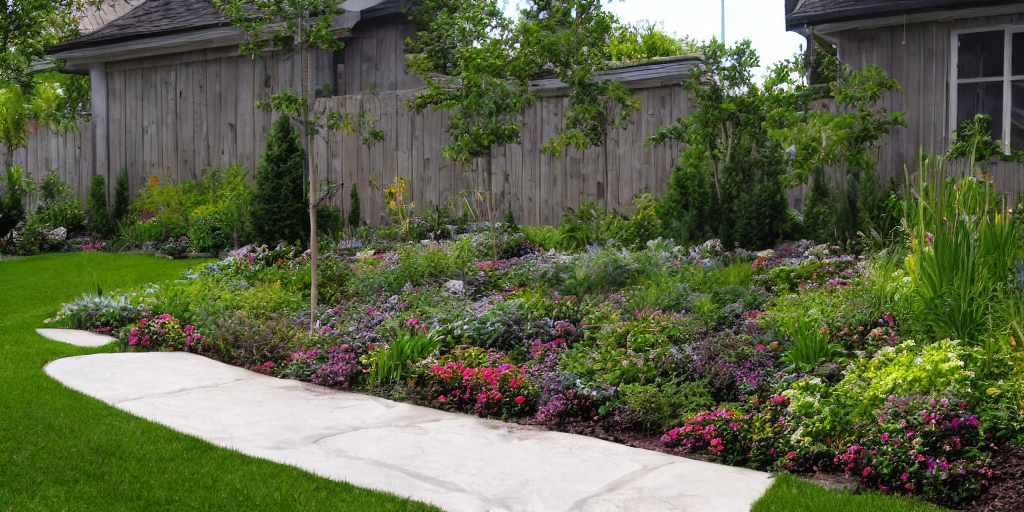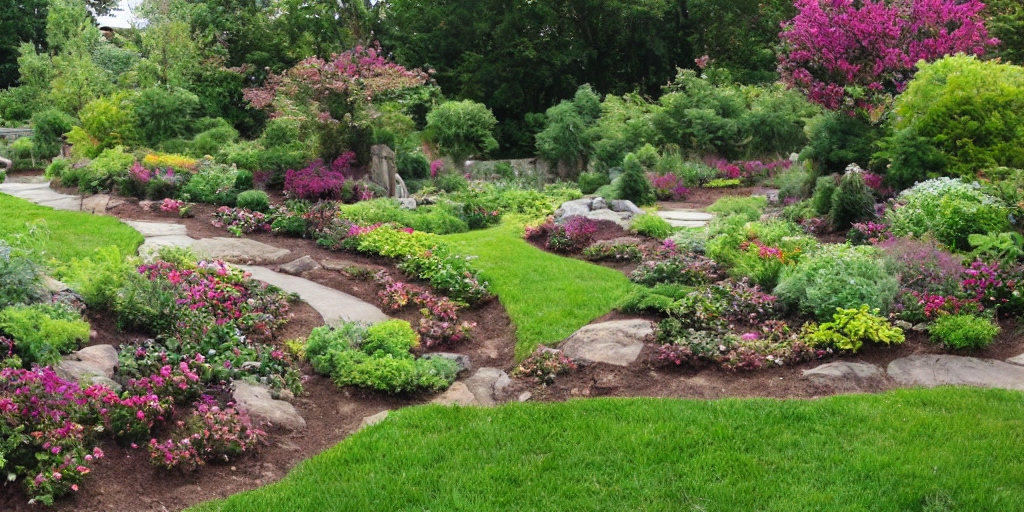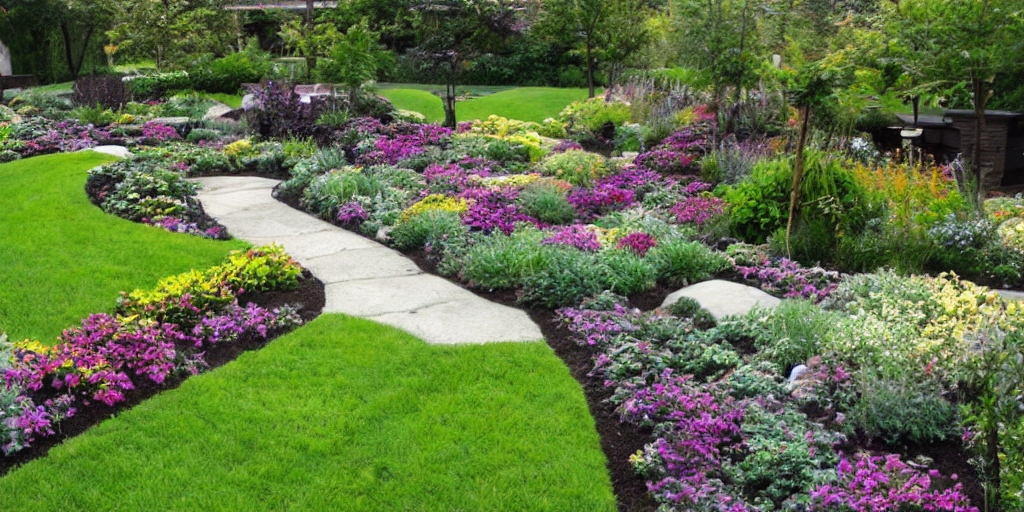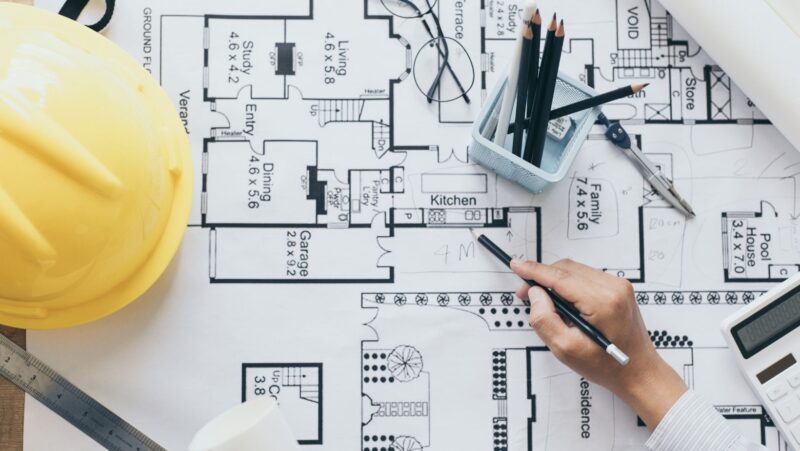When it comes to transforming an outdoor space into a serene sanctuary or a vibrant entertainment hub, landscape design plays a pivotal role. It’s an art that fuses functionality with aesthetics, turning the ordinary into extraordinary.
Whether you’re a homeowner looking to revamp your backyard or a professional seeking inspiration, understanding the fundamentals of landscape design is key. From the principles of design to the selection of plants, this article will guide you through the process, making it less daunting and more enjoyable.
So, let’s dive into the world of landscape design, where creativity meets nature, and every space tells a unique story. Prepare to be inspired and to see your outdoor spaces in a whole new light.
Understanding Landscape Design
Understanding landscape design involves a keen comprehension of the elements and principles that define this field. Typically, it integrates aesthetic appeal and practical functionality, creating outdoor spaces that are both beautiful and usable.
Basic Elements of Landscape Design
Step one in understanding landscape design lies in familiarizing oneself with the basic elements of this discipline. There are five main components: line, form, color, texture, and scale. These elements come to play in all design aspects, shaping the way people perceive and experience any given space.
For instance, lines, either straight or curved, dictate the flow and direction within the area. Forms refer to the shapes of items in your landscape, such as round shrubs or tall, rectangular walls. The interplay between color and texture enhances visual interest, using contrasting hues or similar tones for unity. Lastly, scale pertains to the size relationship between elements within the design, maintaining a harmonious balance.
Principles of Landscape Design
To execute these elements effectively, follow-up knowledge of landscape design principles proves vital. These lean towards proportion, balance, unity, variety, sequence, rhythm, and focalization.
Proportion ensures that the size of the parts has a correct relation to each other. Balance achieves harmony by equally distributing visual weight across the landscape. Unity makes certain that all elements and principles work cohesively. As for variety, sequence, and rhythm, they help sustain excitement and energy throughout the space. Meanwhile, focalization directs attention towards specific areas or objects.

The Importance of Site Analysis
An essential precursor to any design, site analysis gathers essential information about the project site. It looks into the ground quality, the site’s orientation, climate, and existing plants or structures. These factors play an indispensable role in defining the performance of the end design.
Collaboration with Nature
Finally, a critical fundamental in landscape design lies in the collaboration between humans and nature. It promotes the integration of indigenous plants, resource conservation, and a healthy eco-system, making landscape designs sustainable and environmentally friendly.
Understanding landscape design involves a meticulous comprehension of design principles, site conditions, and an inherent reverence for nature. By acknowledging and respecting these principles and values, one can create meaningful and captivating outdoor spaces.
History and Evolution of Landscape Design
Landscape design’s genesis parallels the dawn of civilization, with ancient societies exhibiting appreciation for carefully planned outdoor spaces. Egyptian mural paintings dating back to 1500 BC, for instance, depict meticulously ordered gardens with intersecting pathways and strategically placed plants. Gardens in this era showcased not just the Egyptians’ love for symmetry, but their understanding of horticulture too.
Moving forward, Roman and Greek landscapes represented a deep dive into both symptomatic grandeur and sophisticated functionality. These societies built upon the Egyptians’ foundational principles, infusing emblematic elements such as water features and statues into their sites. The Hanging Gardens of Babylon originated in this epoch, embodying a remarkable expression of human skill and design prowess.
Meanwhile, the East nurtured its distinctive approach to landscaping. Specifically, Japan and China’s philosophies emphasized harmony with nature. Unlike their Western counterparts’ demonstrative styles, Eastern landscape designs sought to capture nature’s essence, often manifesting as miniature renditions of natural landscapes.
The Renaissance period signaled a resurgence of formal gardens. European monarchs demonstrated their wealth and influence through grandiose green spaces laden with geometric designs, water features, and exotic specimens. Classic examples include France’s Château de Versailles and England’s Hampton Court Palace.
The 18th century brought forth the English landscape garden style, which favored less formal, more natural-looking designs. This approach represented a departure from the rigidness of former styles; instead, it replicated the romantic wilderness, complete with faux ruins and meandering pathways.
Modern landscape design stems from 20th-century advancements. It’s characterized by a diversity of styles, ranging from minimalist to ecologically-driven designs. Pioneers like Frederick Law Olmsted and Martha Schwartz ushered in a new age of landscape design, emphasizing creativity, context relevance, and environmental sensitivity. This era recognizes landscape design as both an art and a science – a testament to the field’s continuous evolution.
Across millennia, landscape design has evolved – yet it remains intrinsically tied to its historic roots, showcasing mankind’s enduring relationship with nature.
The Landscape Design Process
Transitioning from historical influences to practical application, landscape design isn’t merely an aesthetic endeavor. It’s an intricate process, one that requires expertise, creativity, and technical knowledge.
The first, and perhaps the most critical phase, involves a careful site analysis. Landscape architects study the property’s topography, existing vegetation, and infrastructure. They must know the location’s climate, soil composition, and drainage patterns. For instance, rainwater shedding in Seattle requires different approaches compared to water management in the arid landscapes of Phoenix.
Next follows the conceptual development phase. This stage sees the translation of gathered information into preliminary design schemes. It’s important to include clients in this phase, taking into account their preferences and the project’s budget. Element placement, like a swimming pool in Florida or a fire pit in Colorado, varies significantly based on the client’s needs and local weather patterns.
Detailing comes afterwards. Detailed design plans specify materials, installations, and construction methodologies. A blueprint for a zen garden in Japan, for example, will include details specific to traditional Japanese horticulture—such as the composition and arrangement of rocks, plants, lanterns, and water basins.
Following the planning stages, construction sets in. Landscape professionals ensure structures, walkways, water features, and plantings align with the finalized design. An English garden, with its lush lawns, flowering plants, and classical statues, requires diligent execution to mirror the precise design sketches.
Lastly, one should not overlook the importance of maintenance. A French formal garden, known for its geometric designs and well-manicured trees, needs regular pruning and upkeep to maintain its structured appearance.
In essence, the landscape design process encompasses a range of stages—site analysis, conceptual development, detailing, construction, and maintenance. Each step shapes the eventual outcome, merging functional considerations with elements of beauty, to craft spaces that foster connection with nature and reflection of historical influences.

Tools and Techniques in Landscape Design
Landscape design employs a myriad of tools and techniques that aim to transform outdoor spaces into functional and aesthetically pleasing landscapes. Two types of these tools stand out: physical and digital.
Physical tools, such as tape measures and soil augers, provide direct contact with the site, giving designers invaluable data on size, positioning, and physical characteristics. The information gathered through these tools aids in formulating design concepts. In contrast, sketchbooks and color pencils sketch the initial design ideas, allowing designers to visualize possibilities before translating them into reality. These sketches provide the nexus between the designer’s creativity and the landscape’s potential, offering a glimpse into the prospective outdoor space. Drafting and tracing paper serve for the creation of accurate design plans, including sections, elevations, and detailed planting schemes. Examples of physical tools include but are not limited to, scales for measuring, compasses for direction orientation, and templates for architectural symbols.
Digital tools on the other hand, offer a modern approach to landscape design. The advent of digitalization brought about software such as AutoCAD, SketchUp, and Photoshop. They enable designers to produce highly accurate, comprehensive design plans which can be easily edited and shared. AutoCAD, for instance, offers precision drawings and detailed documentation, while SketchUp provides 3D modeling capabilities, enhancing understanding and visualization. In turn, Photoshop allows for the creation of photorealistic renditions, enabling clients to appreciate the proposed landscape in an engaging manner.
Beyond the physical and digital implements, techniques play a pivotal role. Common techniques involve site analysis, design concept formulation, master planning, material detailing, and usage of design principles such as rhythm, balance, and unity. A concrete example would be employing trace overlays during the site analysis stage to compare different design strategies.
In the face of evolving technologies, the sophistication and precision of these tools and techniques continue to improve, refining the art and execution of landscape design. Yet at the heart of the process, it’s crucial that these tools and methods serve as a conduit for weaving in history, culture, and nature, thereby ensuing landscapes that connect users to their surroundings in meaningful ways.
Landscape Design Case Studies
Showcasing the effectiveness of the previously discussed tools and techniques, various case studies reveal the stunning transformation of ordinary spaces. For instance, the Central Park design by Frederick Law Olmsted and Calvert Vaux, New York, employed comprehensive site analysis and balance principles to transform the land into a sprawling park. Spatial organization techniques and use of AutoCAD resulted in intricately planned paths, featuring a seamless blend of wooded areas and open meadows.
Demonstrating mastery of Photoshop for realistic visualizations, the Millennium Park, Chicago, features stellar visual elements. Orchestrated by Kathryn Gustafson, the resultant layout boasted of an impressive array of fauna, including varieties like Purple Rose of Sharon and Summer Beauty Allium. Such vibrant visualizations enticed stakeholders, resulting in this ambitious project’s success.
Relatively compact urban spaces often pose challenges. However, designs like Paley Park, New York, stand as testament to usability of confined areas. Utilizing sketchbooks for initial concept creation, the designers and architects optimized minimal space for maximum use. Its careful integration of water features and foliage, orchestrated using meticulous design principles such as rhythm and contrast, serves as a perfect urban oasis.
Technological evolution further amplifies the sophistication of landscape design. High Line Park, New York, provides an impactful example. It transformed an abandoned, elevated railroad into an inviting urban park. From precise measurements achieved by tools like tape measures, to comprehensive site planning using AutoCAD, each aspect showcased seamless coordination and flawless execution of complex landscape transformations.
These case studies epitomize the powerful potential of landscape design tools and techniques. They illustrate the metamorphosis of spaces from ordinary to extraordinary, whilst capturing cultural nuances, bending to natural factors, reflecting historical elements and satisfying the end-users.
Top Landscape Design Ideas for 2022
Continuing the journey into the realm of landscape design, 2022 brings fresh ideas that juxtapose traditional tools and techniques with modern aesthetics and environmental sensitivities.
- Urban Oasis Design: Pioneering a blend of the built environment with lush greenery, Urban Oasis turns compact urban domains into sanctuaries of tranquility. Biomimicry principles – replicating patterns and strategies found in nature, aid in crafting these havens. The High Line Park in New York exemplifies this approach.
- Xeriscaping: Respecting water conservation, Xeriscaping employs drought-resistant plants to create low-maintenance and sustainable landscapes. This practice started in dry geographical regions like Arizona but is flourishing in popularity across different regions in 2022, as water conservation becomes a universal concern.
- Multi-functional Outdoor Spaces: Designing to serve diverse needs, multi-functional outdoor spaces present a confluence of aesthetics and functionality. They can include elements like fireplaces for socializing, vertical gardens for city dwellers, and play areas for children – all succinctly designed within one landscape.
- Plant Layering: Following the concept of using varied plant heights to create an aesthetically pleasing and ecologically balanced landscape, Plant Layering helps in creating depth and interest. It’s not just about the height, but also considering bloom times, leaf shape variation, and color coordination.
- Climate-Adapted Landscaping: As environmental changes become more tangible, Climate-Adapted Landscaping is gaining popularity. Such designs incorporate vegetation and construction materials that are adapted to local climate conditions, minimizing the necessary maintenance and irrigation.
- Edible Gardens: Merging nourishment with nature, Edible Gardens are becoming a top trend. These gardens include fruits, vegetables, and herbs, providing fresh and local produce while maintaining an inviting environment.
- Tech-Infused Landscape: Merging the digital with the physical, Tech-Infused Landscapes incorporate smart irrigation systems, programmable lighting, and more. This trend highlights how technological evolution continues to refine the art and execution of landscape design.
Landscape design’s evolution is a testament to our growing understanding of the environment and our place within it. We’ve seen how tools and techniques can shape outdoor spaces, making them both functional and beautiful. Digital advancements have brought precision to the process, while principles like site analysis ensure harmony with history, culture, and nature. The case studies of Central Park and Millennium Park demonstrate the power of effective tool utilization. Looking ahead, 2022 is set to be an exciting year for landscape design. From Urban Oasis Design to Tech-Infused Landscapes, the trends are pushing boundaries, blending traditional methods with modern aesthetics and sustainability. As we embrace these trends, we’re not just creating landscapes – we’re crafting spaces that respect and enhance our shared environment.





